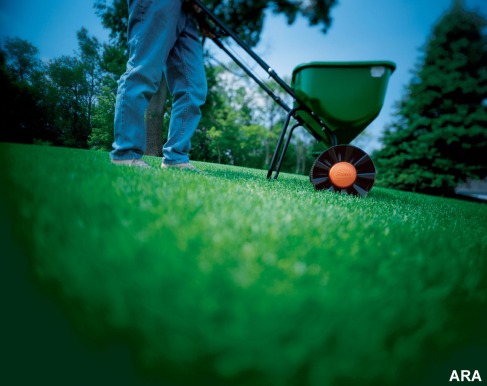People associate lawn care in Tulsa with spring and summer, but the fall is actually the optimal time to take steps toward a healthy, greener lawn.
Rout the Drought
This summer’s drought has left many lawns in Tulsa straw-colored and dormant. Fall lawn care can help your lawn recover. During a drought, you should continue to fertilize your lawn every eight weeks with a slow-release fertilizer. A lawn that has the proper nutrients grows dense, deep roots and recovers from drought faster. A regularly fed lawn will also be healthier and thicker than an unfed lawn. Couple feedings with infrequent, deep watering to promote deeper roots, which provide a larger reservoir of water to draw from.
After the drought passes, keeping this feeding schedule up through the fall should help your lawn green up quickly. If brown patches remain, fall is the time to consider raking those spots out and reseeding to get your lawn healthy for the following spring.
Feed the Need
Even lawns not stricken by drought need nourishment in the fall – and autumn feeding can make a big difference. Fall feeding can bring a dramatic improvement as the lawn recovers from summer damage. Lawn fertilization in Tulsa can help store vital nutrients your soil so that underground root development can continue until the ground freezes to ready the lawn for fuller growth in the spring. Two feedings — timed around Labor Day and Halloween — are recommended for Northern lawns, while Southern lawns are best-fed four-to-six weeks before the first frost occurs in your specific region.
Let It Breathe
In order to grow, a lawn needs air. As a rule of thumb, if you can’t see the grass due to leaf coverage, then it’s time to remove the lawn debris from the yard. Clearing leaves and clippings in the fall will help by removing clutter that keeps air and sun from reaching the growing grass. Heed caution if mulching leaves, as a thick layer spread onto the lawn actually does more harm than good.
One great way to let your lawn breathe is through core aeration in Tulsa, which promotes deep root growth. Aeration removes cores of dirt, thatch and grass and reduces soil compacting that can keep grass from developing roots deep enough to absorb rainwater. For best results, choose an aerator that removes plugs of soil, with the remaining holes at least 3/4″ in diameter, 3″ deep and no more than 3″ apart.
Overseed
Once the lawn is aerated, look for weak spots in it. Drought, thatch, insects, disease or seeding too lightly at first planting can make lawns thin or patchy. Overseeding — the spreading of grass seed directly onto soil within an existing lawn — can improve a lawn’s appearance dramatically and eliminate the need for a total lawn renovation.
Fall is the prime time to overseed because the warm soil promotes rapid seed growth and typically, fewer weed problems emerge at this time of the year. If the thatch layer of dead roots and stems below the green blades is more than 1/2″ thick, you should de-thatch the lawn before overseeding. If the presence of tree roots has resulted in an inadequate topsoil layer, spread a layer of topsoil no more than 1/4″ over the lawn.
The day before you overseed, mow the lawn slightly lower than normal. Be sure to use fertilizer when you seed. For the next several weeks after overseeding, keep the top inch of soil moist to permit growth.
Performing these simple Tulsa lawn care steps in the fall will help you have a beautiful lawn in the spring. For more information on fall lawn care and tips on preparing your lawn for winter, visit http://www.oklahomalandscape.com or call 918.299-LAWN.
Courtesy of ARA Content.

